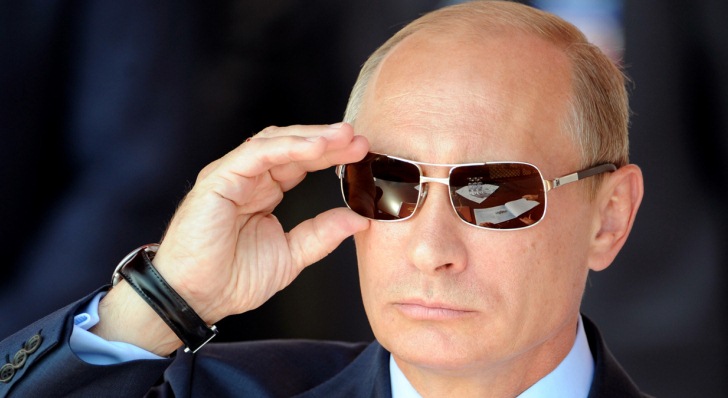Part 1 & 2
On January 1, the Gas Transmission System Operator of Ukraine (GTSOU) LLC began transporting Russian natural gas to Europe under a new five-year transit agreement (Gordonua.com, January 1, 2020). This contract (consistent with European Union regulations) was signed by representatives of the Ukrainian energy firm Naftogaz, GTSOU (established in line with Kyiv’s commitments to implement EU energy market “unbundling” legislation), and Gazprom on December 30, just one day before the previous ten-year gas supply and transit contract was set to expire. The issue of direct gas supplies to Ukraine was not included in the package agreements.
According to the new contract, Russia will continue shipping gas westward via the Ukrainian pipeline network through at least 2024, with the possibility of extending the deal for another ten years, on the same terms (Gordonua.com, December 30, 2019). Under the new agreement, Ukraine will transmit a minimum of 65 billion cubic meters (bcm) of Russian natural gas to Europe in 2020 and at least 40 bcm per year in 2021–2024. However, the actual volumes may be higher (Epravda.com.ua, December 21, 2019). Additionally, on December 27, even before the new contract was signed, Russia’s state-owned gas major Gazprom paid Naftogaz $5 billion. This sum included $2.9 billion of compensation following the Stockholm Arbitration Court ruling (2018) and $2.56 billion in repayment of both the previously unpaid compensation and of the interest accrued from the date that the decision was announced on February 28, 2018 (Epravda.com.ua, December 27, 2019). In exchange, Ukraine agreed to release the seizures of Russian property in England, Wales, the Netherlands and Luxembourg. The arrests of Gazprom assets abroad (worth tens of billions of dollars) were imposed at the request of Naftogaz in order to force the Russian company to pay the debt awarded by the Stockholm arbitration (RIA Novosti, January 20, 2020).
Andriy Kobolyev, the CEO of Naftogaz, stated that the 2020 transit deal is the result of an “acceptable compromise.” The Ukrainian company wanted to sign a ten-year contract with a minimum pumping rate of 60 bcm each year, while Gazprom favored only a one-year, temporary contract (Deutsche Welle—Ukrainian service, January 3, 2020). Moreover, among Russia’s key demands was the nullification of all of Naftogaz’s arbitration claims in Stockholm, including the $2.9 billion that Ukraine ultimately received under the new contract. Russia’s position had changed dramatically when it became clear the United States would impose sanctions on the Nord Stream Two gas pipeline across the Baltic Sea (directly linking Russia and Germany) (Biz.liga.net, December 23, 2019). Finally, Naftogaz and Gazprom entered into a peace settlement, under which Kyiv agreed to rescind its demands that the Russians pay the $7.4 billion fine imposed by the Antimonopoly Committee of Ukraine or the $12.2 billion of additional legal claims against the Russian gas company under consideration by the Stockholm Arbitration Court (5.ua, December 31, 2019). At the same time, Ukraine does not relinquish future claims on the Naftogaz’s illegally lost assets in annexed Crimea (5.ua, December 30, 2019).
The new gas transit deal has strategic meaning for Ukraine. According to Ukrainian President Volodymyr Zelenskyy, this agreement will bring more than $7 billion in revenue. And as a result of the negotiations, for the next five years the Ukrainian gas transit system will operate without loss, guaranteeing energy security and welfare for Ukrainians (Pravda.com.ua, December 30, 2019). The president’s statement was supported by Naftogaz’s business and development director, Yuriy Vitrenko, who stated that the deal is worth over $7.2 billion. Vitrenko asserted that this is the best transit deal in the history of Naftogaz-Gazprom agreements. For the first time, the contract contained not a “take-or-pay” but a “ship-or-pay” clause. In other words, the Russian company will be forced to compensate Ukraine for the transit of the contractually agreed minimum amount, even if it does not actually ship that much gas to the EU in a given year. Vitrenko assured that these guaranteed transit revenues will be sufficient to cover the transit costs with the margin. Additionally, according to Vitrenko, transit fees for extra volumes beyond the minimum amount will substantially increase (Facebook.com, December 30, 2019).
The latest standoff between Ukraine and Russia had again threatened to disrupt supplies to Europe and could have led to another protracted Russo-Ukrainian gas war if the two sides had failed to reach an agreement after December 31, 2019. But Ukraine demonstrated its reliability as an EU transit partner. By the end of last year, Kyiv fulfilled all the requirements put forward by the EU and finalized the unbundling process of Naftogaz (establishing GTSOU, thus separating the gas transmission system of Ukraine from gas supplier Naftogaz). According to Naftogaz officials, this is by far the most significant reform in the energy sector in the history of independent Ukraine (Naftogaz.com, January 1, 2020). The newly established GTSOU has already signed interconnection agreements with operators from Hungary, Romania, Poland, Moldova and Slovakia (Eustream) (Day.kyiv.ua, December 31, 2019). Also, the Ukrainian gas transmission system is expected to open a virtual gas reverse flow from Slovakia in 2020, which should be profitable since no money would be spent on unnecessary gas transmission (Nv.ua, January 21, 2020).
For his part, the head of GTSOU, Sergey Makogon, expects that the Ukrainian and Russian partners will eventually be able to return to the issue of Russian gas storage in Ukrainian underground facilities (UGS) (Interfax, January 9, 2020). He also argued that the new transit deal has strategically important implications for Ukraine. The total positive effect on the Ukrainian economy during the next five years, in addition to the revenue from the transit itself, is expected to reach approximately 150 billion hryvnia ($6.18 billion) and GTSOU’s total revenue during this period is forecast at about 115 billion hryvnia ($4.74 billion) (Interfax.com.ua, January 9). Moreover, Makogon contended that Russia will continue to transport at least 40 bcm of gas through the Ukrainian transmission network even after 2024 (Interfax.com.ua, January 14).
At the beginning of 2019, Russia was quite confident it would be able to either redirect its gas transit to the EU away from Ukraine before the expiration of the transit contract or renew the deal on Moscow’s own terms. But despite Gazprom’s (i.e., the Kremlin’s) transit diversification strategy, the new five-year deal shows that the Ukrainian transit corridor still remains of paramount importance for Russia.
Part 2
Kyiv and Moscow finalized a bilateral deal to transport Russian natural gas to Europe through Ukrainian territory. Although the new five-year agreement, signed on December 30, 2019, represented a compromise for both countries, it proved an especially difficult and painful decision for Russia.
During the last five years, the Kremlin has been seeking to eliminate Russia’s dependency on the Ukrainian gas transit corridor. Two major Russian pipeline projects, the 55-billion-cubic-meter (bcm) Nord Stream Two and the 15.75 bcm TurkStream (with a second 15.75 bcm going to Turkey), were supposed to be launched by the end of 2019, before the expiration of the previous ten-year transit contract with Kyiv. Together, these projects—two powerful pipelines that bypass Ukrainian territory to the north and south, respectively—aim to entirely remove the need to transport gas via Ukraine, with whom Russia has tense political relations (the two sides are de facto at war). But even with the launch of TurkStream on January 9, Russia is no closer to its goal of eliminating its reliance on the Ukrainian corridor (see EDM, January 16).
Although the number of Russian pipelines delivering gas to Europe has increased, Russian exports to the European Union dropped 20 percent during the first eight days of 2020. Indeed, transit through Ukraine decreased from 262 million to 91 million cubic meters per day (Sprotyv.info, January 11). But because of the conditions in the new agreement favorable to Kyiv (the “ship-or-pay” clause), Gazprom had to pay twice as much in transit fees to Ukraine as was actually transported (Censor.net.ua, January 25). At the same time, gas transit through Poland decreased by more than 20 percent. This is unusual since the Yamal-Europe gas pipeline is considered Gazprom’s most efficient transit route, and its load remained stable (100 million cubic meters per day) throughout both 2018 and 2019 (Kommersant, January 9). The launch of TurkStream did not change the overall picture: the pipeline has been loaded to only half of its designed capacity, whereas gas transit through Nord Stream One (also 55 bcm per year) increased by only 1 percent and reached 173.4 million cubic meters per day (Biz.liga.net, January 9). Moreover, in 2019, Gazprom experienced a 15.4 percent decline in net profits compared with 2018 (Teknoblog.ru, January 14).
The reason for the export decline and low gas prices (the cost Europe pays for Russian gas, $169.8 per thousand cubic meters, is at its lowest level in 15 years) is the rising competition that Gazprom faces in the European gas market. The reorientation of a significant portion of EU consumers from relying on pipelines to purchasing liquefied natural gas (LNG) challenges Gazprom’s supplies to Europe (see EDM, April 16, 2019). LNG is expected to play an increasingly important role in Europe, whose imports of natural gas in liquefied form have already increased by 75 percent in 2019 (Topwar.ru, January 16, 2020). Additionally, continued geopolitical tensions between Russia and Ukraine and uncertainty over the outcome of the gas transit negotiations late last year had provoked European countries to pump more surplus gas into their own underground storage sites.
Furthermore, Gazprom is losing clients due to successful European efforts to diversify gas supplies and to open the gas market to competition. On January 1, 2020, Gazprom lost its monopoly in the Finnish gas market when Finland started to receive gas from Latvian storages via the Finnish-Estonian gas pipeline Balticconnector. This new pipeline is the largest infrastructure project in Estonia and Finland and one of the key projects related to the European Union gas market. Together with the gas link Gas Interconnection Poland–Lithuania (GIPL), it will strengthen the integration of the Baltic countries into the single EU market. The construction of Balticconnector cost about 300 million euros ($331 million), with 200 million euros ($221 million) provided by the EU (Deutsche Welle—Russian service, January 4, 2020). The implementation of that diversification strategy will furnish Finland and Estonia with an effective tool to put pressure on Gazprom going forward. Additionally, new developments will create favorable conditions for increased competition and price transparency. Notably, the Regional Gas Exchange GET Baltic, operating in the Baltic States (Lithuania, Latvia and Estonia), has already established a common trading platform for the Baltic-Finnish gas market. So far, 92 market participants are registered on the GET Baltic gas exchange (Gaas.ee, December 31, 2019).
Another Gazprom customer, Poland, is ready to refuse Russian natural gas by 2022. Gaz-System S.A., a gas transmission system operator in Poland, has received permission to build 20 kilometers of onshore pipeline as part of Baltic Pipe. This strategically important project aims at creating a new natural gas supply corridor from Norway to the Danish and Polish markets. The implementation of this scheme will strengthen the energy security of Poland as well as the wider Central and Eastern European region. According to the plan, the import of gas will begin in October 2022, just before the Yamal agreement signed between Russia, Belarus and Poland expires (Oilcapital.ru, January 9). Last November, Polskie Górnictwo Naftowe i Gazownictwo S.A. (PGNiG), a Polish state-controlled oil and gas company, notified Gazprom that it will not renew their long-term deal on gas supplies when the agreement expires in December 2022 (RBCu, November 15, 2019).
Moreover, on January 28, 2020, Bulgaria’s Energy Minister Temenuzhka Petkova announced that her country plans to replace half of the gas imported from Russia with Azerbaijani supplies and LNG by the end of this year (Apa.az, January 28). Also, on January 2, Greece, Cyprus and Israel signed the EastMed Gas Pipeline deal, which will connect the Middle East with Europe and potentially help to further reduce regional dependence on Russian gas (Nv.ua, January 2). Finally, Nord Stream Two, which was supposed to be a symbol of Moscow’s geopolitical victory over Ukraine, has become bogged down by sanctions passed by the United States; it is now difficult to predict when the pipeline will finally launch. Although Gazprom is planning to complete the project alone (without European corporate participation), it remains unclear how Russia can succeed without international assistance.
Even though Russia will most likely remain the largest gas exporter to Europe for the foreseeable future, it is clear that Gazprom can no longer retain its monopoly over much of the European gas market that had heretofore allowed it to impose its will and dictate terms to Central and Eastern European customers. With the cost of the Nord Stream Two and TurkStream projects totaling almost $20 billion, it also remains questionable whether Putin’s current gas strategies will ever prove profitable for Russia.









